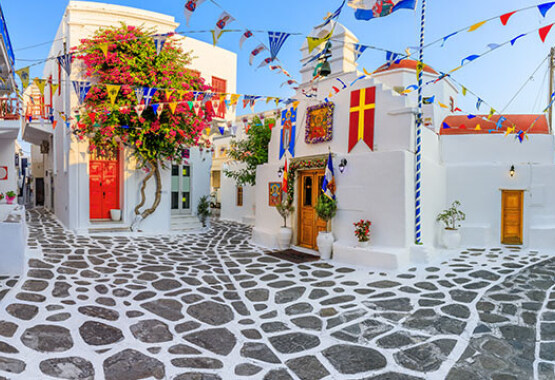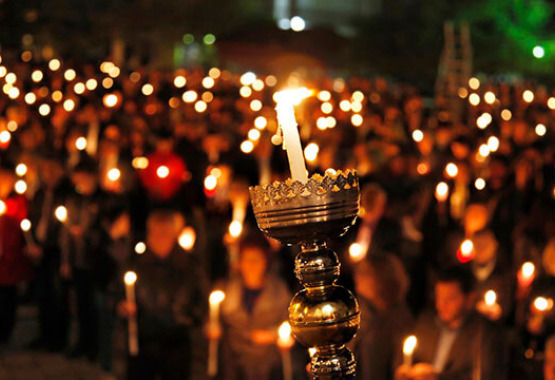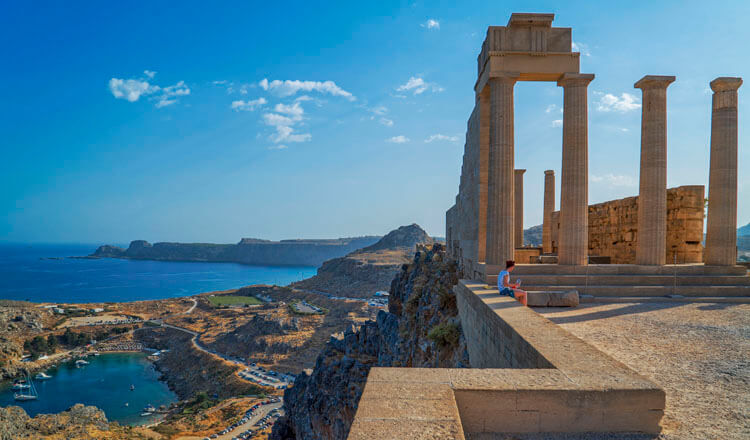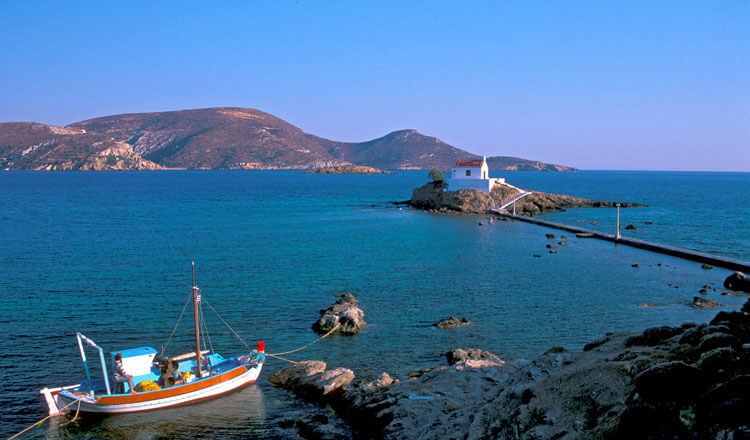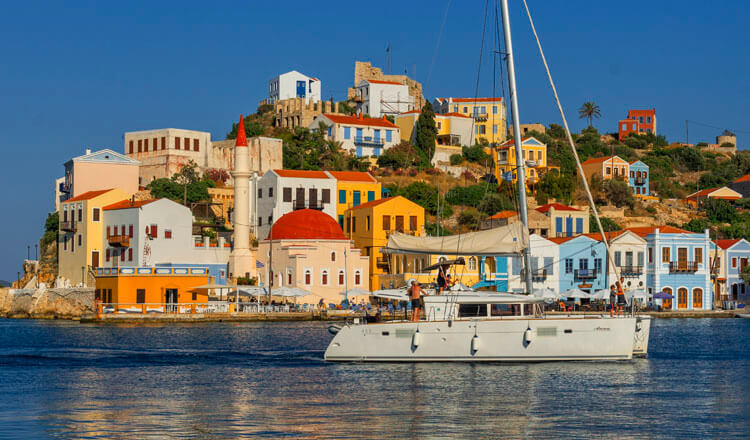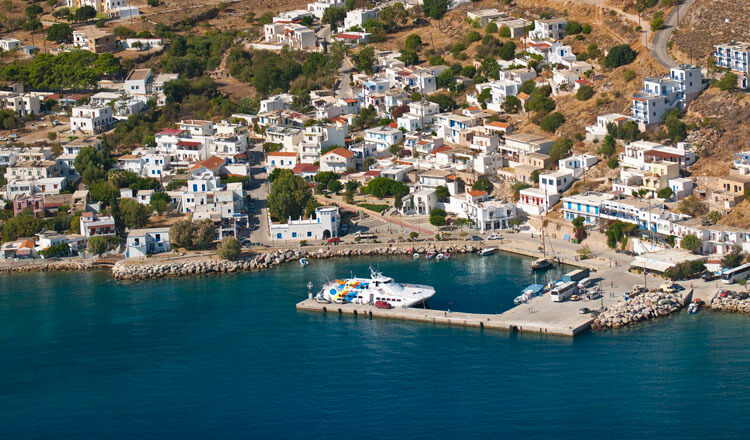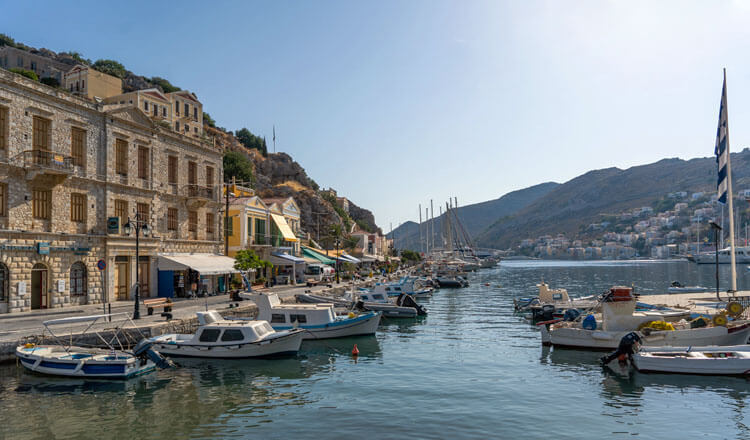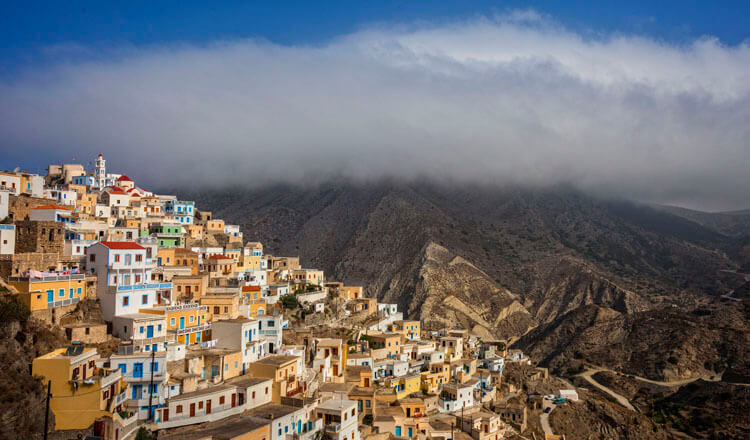Chora
The mediaeval Chora town was built around the Monastery of St. John the Theologian. This is one of the most beautiful and best preserved mediaeval towns in the Aegean Sea area. The small whitewashed houses shimmer under the sun, and the two-storey traditional houses will no doubt catch your eye. Stroll along the alleys and look for the hidden little restaurants, cafés and shops. Look especially for the traditional bakeries where you can buy cheese pies, local dairy products and a special confection, called poughi [pouch] made with honey and nuts wrapped in a pouch-like dough.
Notice the houses built side by side, their windows built high on the walls.They flank narrow stone-paved winding alleys, where there are dozens of little churches that date back to the 15th-17th c. Masons used local stone and the roofs were built using cypress wood, layers of astivi (a type of bush which grows on Patmos Island), seaweed, and earth.
Follow the uphill street to reach the fortified monastery of St. John the Theologian. It was founded in 1088 by a monk, Brother Christodoulos under the patronage of the Byzantine Emperor Alexios I Komnenos. Visit also the museum - sacristy, it is the biggest in the Aegean Sea area. You will see rare items on display such as the scroll of the purple codex (late 5th - early 6th c.), and the royal decree bearing the golden seal of Emperor Alexios Komnenos (1088), whereby Brother Christodoulos received the mandate to build the monastery on Patmos Island. The monastery’s library is an exceptional one, as it houses approx. 1200 hand-written codices, over 13000 documents and more than 4500 archetypes [incunabula] and early copies of printed documents (16th c.). In the premises, there is a conservation workshop for paintings.
Before you reach the monastery, visit the Cave of the Apocalypse, located halfway between Chora and Skala. At the cave’s opening you’ll see St Anne’s Church, which was renovated in the 17th c. Visit also the nearby Patmiada School. It was inaugurated in 1713 and it acted as a spiritual centre for the Greeks under the Ottoman occupation, particularly during the Greek War of Independence (1821). It has been functioning as a seminary to date, recognised by the Greek state. You will be impressed by the beauty of Panagia Diasozousa Church (1599), its whitewashed dome, and the stone-built belfry, surrounded by flower beds, tall palm trees, and oleanders.
In Chora, you can visit the house of Emmanuel Xanthos, a founding member of the Filiki Eteria (meaning ‘Society of Friends’, a society created with a view to organising the 1821 Greek Revolution and helping it to spread). See also Nikolaidis Residence (17th -18th c.), where a collection of archaeological finds is on display, along with photographic evidence of historical events on the island. The Folk Art Museum is housed in the Simantiri Residence (17th c.). Items of household use, kitchenware, decorative articles and family heirlooms are included in the exhibits.
Skala
This is Patmos’ port and the largest town on the island. The harbour is in a cove, where a thin bottle-neck shaped strip of land connects the two parts of the island -but only just.
You will see a number of Italian administration buildings in the town, and in between you’ll find many lodging facilities and fresh fish tavernas. During the 17th c. there were no buildings by the harbour, only a few warehouses, as all the locals stayed in Chora, for fear of the pirates. In the late 19th c. the harbour business thrived and during the Italian rule period it became the administrative centre; this is when the Italian garrison quarters, the Post Office and the Customs Office were constructed. After the island was ceded to Greece, a number of beautiful neoclassical buildings were raised and they remain in use today either as residences or shops.
Make sure you visit Petrokaravo, an islet brimming with legends and traditions, which is shaped like a listing ship [karavi in Greece] followed by two little boats. Tradition has it that this was a pirate ship which was turned into stone following the prayers of St. Christodoulos. Walk all the way up to Kastelli, on the low hilltop overlooking Skala and enjoy the amazing view. See also the ruins of the island’s ancient capital, as well as the churches of Agia Paraskevi, Agia Aikaterini and Panagia Koumana (1780).
North
Kampos
Pano [Upper] Kampos is an inland village and Kato [Lower] Kampos is a seaside green hamlet with lots of gardens, orchards, olive and pine groves, eucalyptus and tamarisks that grow along its popular sandy beach. Take also a trip to the nearby seaside villages of Vagia, Livadi (E), and Lefkes (W). Distance from Chora: 9 km N.
Visit Evangelismos church [Annunciation] in a small square facing the road, and the Livadi Kalogiron area, where you’ll see the old monastery buildings and Agios Nikolaos [St. Nicholas] Church (11th - 12th c.) located at 3 km NW of Chora; these are some of the oldest churches on the island. Make sure you go swimming at Lampi beach; its coloured pebbles are quite impressive.
South
Groikos
In ancient times, this seaside village was known as Agroikia. The present-day village is located in a small green valley that faces an enclosed cove fringed with a beautiful sandy shore where tamarisks grow. It looks more like a lake, with Tragonisi Islet at its mouth and flanked by two small peninsulas. It’s a 4.5 km trip SE from Chora.
Take a trip to nearby Kallikatsou rock, preferably during the sunset hour; this seaside monolith becomes orangey-coloured as the sun meets the horizon and you can see the rock-hewn steps on it. It used to be a place of worship in antiquity.
Neighbouring islands
Arkoi (or Arkioi)
During your stay on Patmos Island, don’t miss out on a day trip to the nearby Lilliputian Arkoi Islets. They are a group of small islands with stretches of shrubland and a few trees on them, located east of Patmos and north of Leipsoi islets. You’ll find Arkoi hamlet on the largest island of the Arkoi group. Old stone-built houses, some whitewashed and some newly built, stand among the picturesque little tavernas. Explore the lovely beaches shaded by lentisks and tamarisks such as Limnari, Kapsaliasmenos, Tiganakia, Patelia and Ampelaki. There is also another great beach with a lentisk and tamarisk vegetation on Marathi Islet. Make sure you hop on one of the tourist boats that will take you for a refreshing swim in the crossing between two rocky islets Mikro Aspronisi and Makri Aspronisi. The beauty of the imposing white schist rocks and of the shallow crystal-clear waters will take your breath away.
